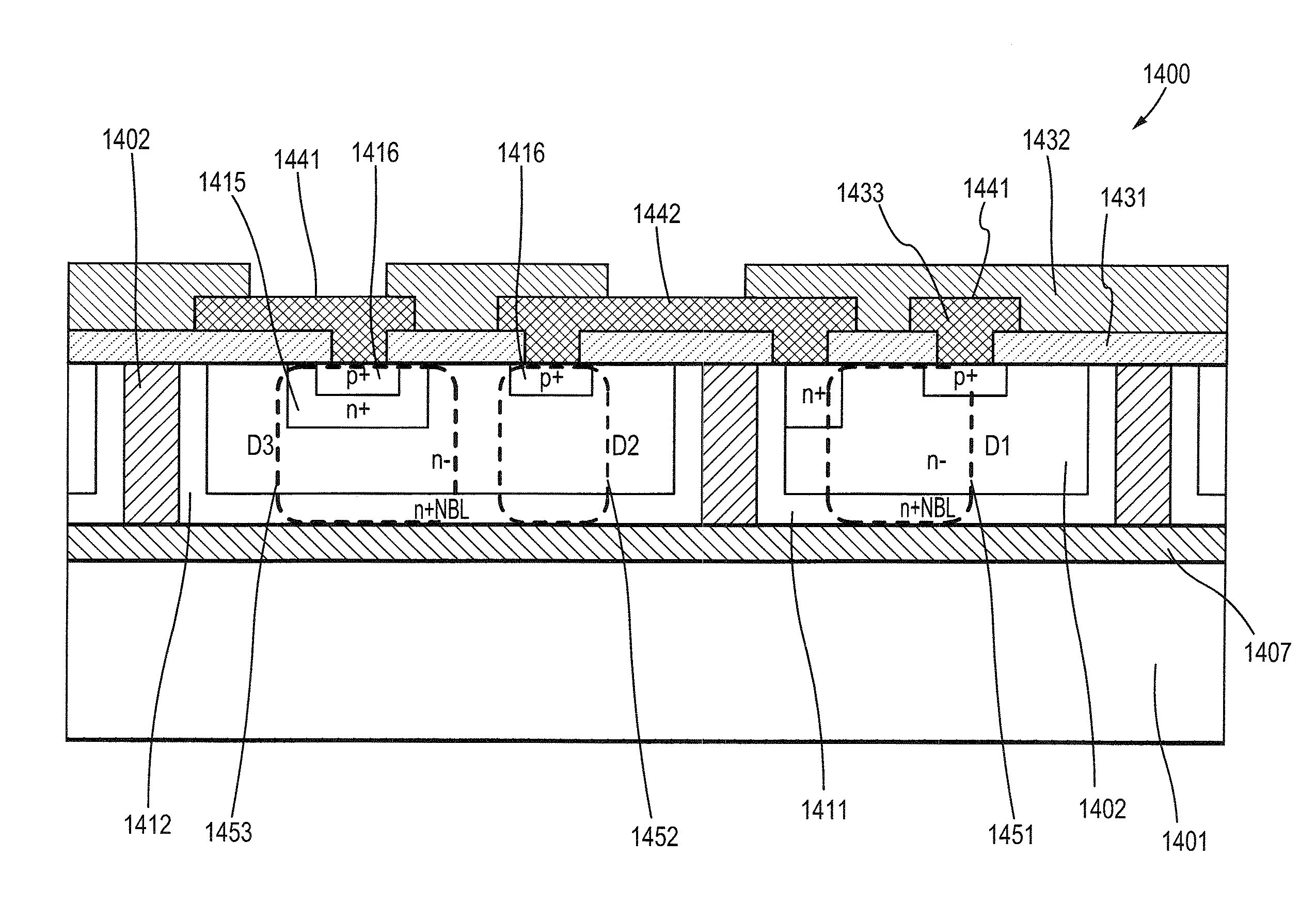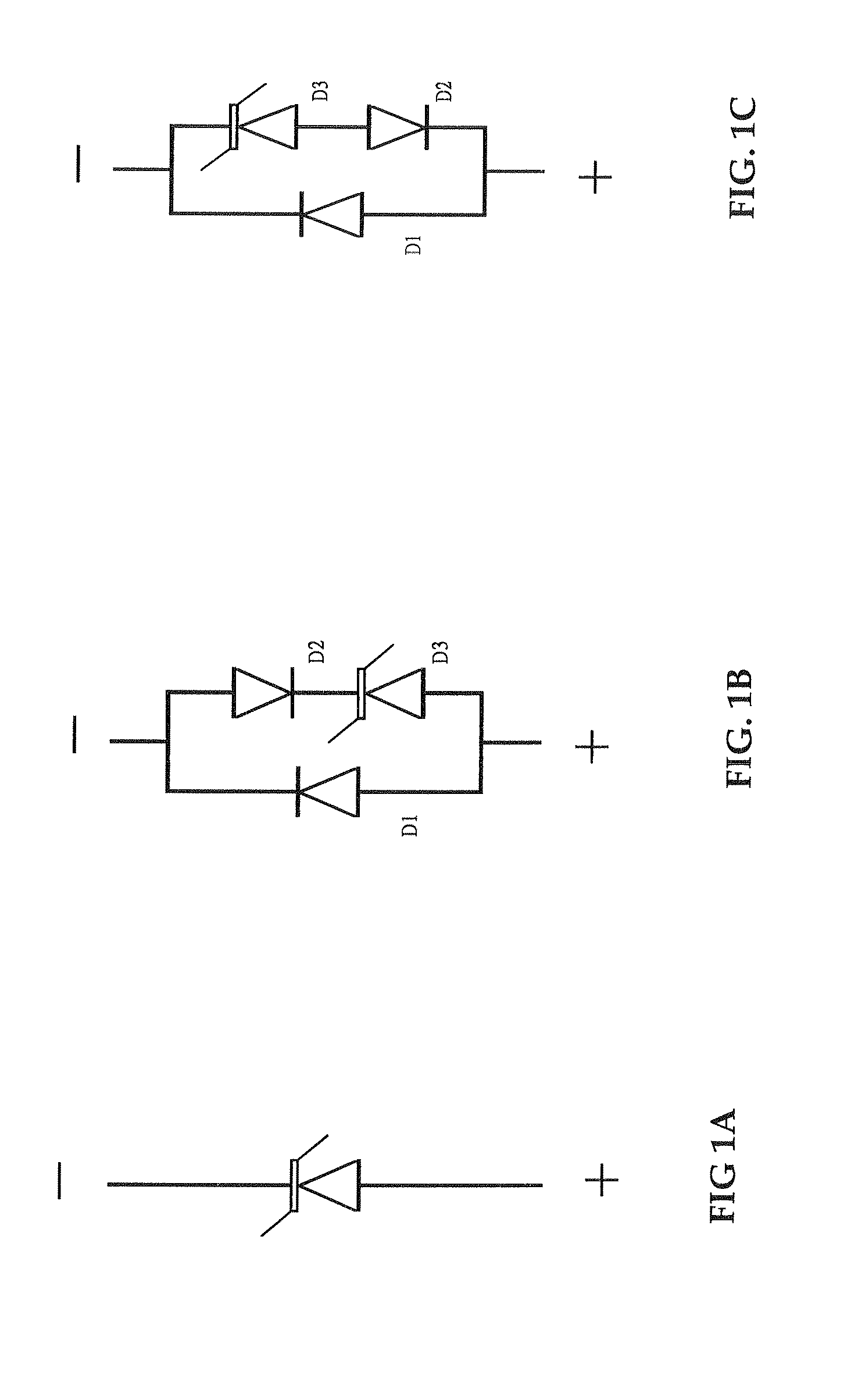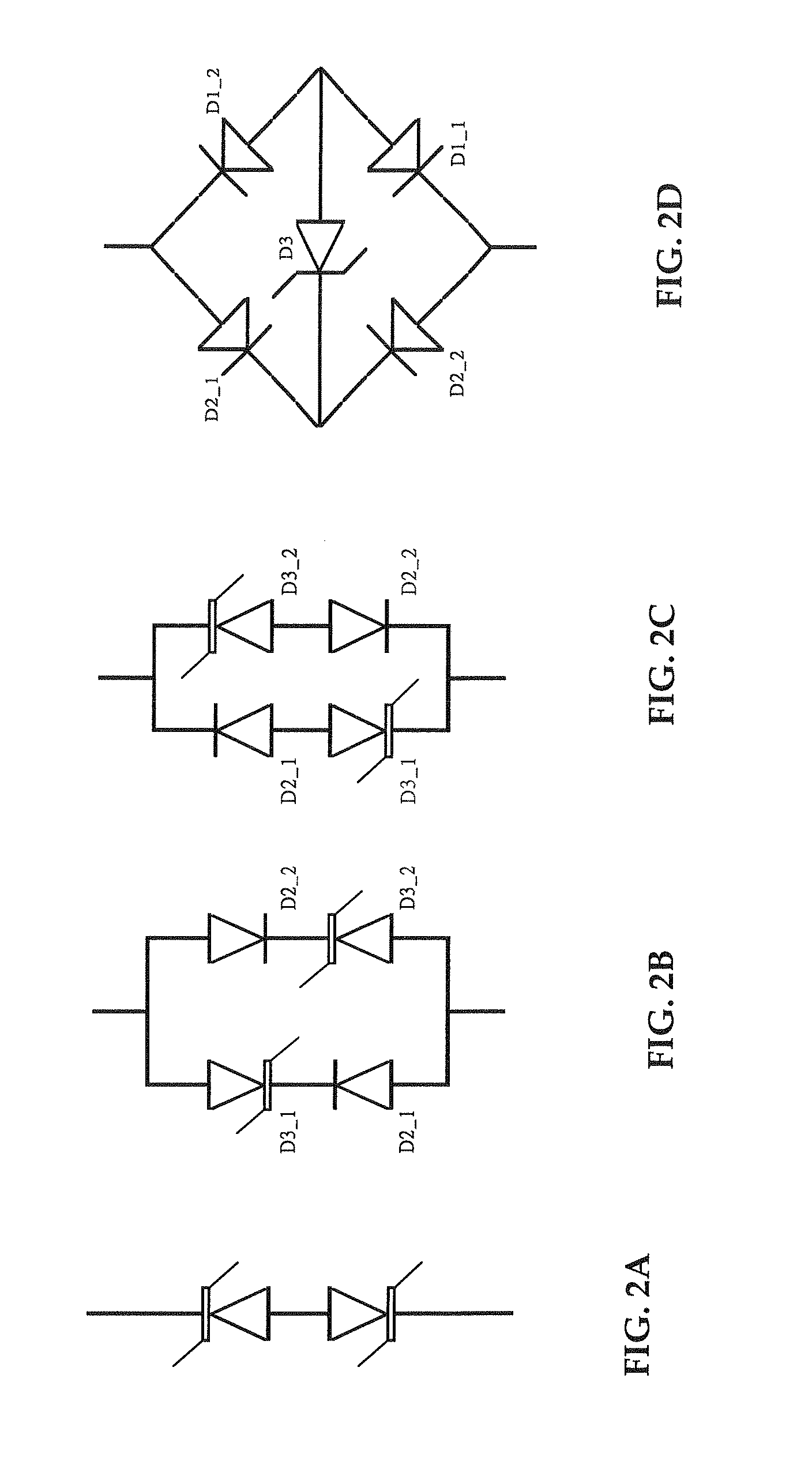Semiconductor device structure and methods of making
a technology of semiconductor devices and devices, applied in the direction of diodes, basic electric elements, electrical appliances, etc., can solve the problems of increasing the capacitance of the device, reducing the practical use of the device in the higher frequency circuit, and reducing the practical use of the device, so as to reduce the concentration of doping
- Summary
- Abstract
- Description
- Claims
- Application Information
AI Technical Summary
Benefits of technology
Problems solved by technology
Method used
Image
Examples
embodiment
of FIG. 4
[0078]Though the main semiconductor device component for protection purpose in a typical, unidirectional or bidirectional, assembled device is a conventional unidirectional diode, however, it can be constructed of a diode, a transistor, a thyristor, an assembled device, or a circuit that functions the same as a conventional unidirectional or bidirectional transient voltage suppressing and electrostatic discharge protection device.
[0079]FIG. 4 is a cross-sectional view illustrating the semiconductor construction of a unidirectional assembled device of the present invention. The device 400 is fabricated in accordance with a preferred embodiment of the present invention. Equivalent circuit of the unidirectional assembled device 400 is the same as that shown in FIG. 1B.
[0080]The unidirectional assembled device 400 comprises a p-type semiconductor substrate, or substrate 401. An n+ buried layer (NBL) 411 is disposed on the substrate surface 405, and an n− epitaxial layer 402 is ...
PUM
 Login to View More
Login to View More Abstract
Description
Claims
Application Information
 Login to View More
Login to View More - R&D
- Intellectual Property
- Life Sciences
- Materials
- Tech Scout
- Unparalleled Data Quality
- Higher Quality Content
- 60% Fewer Hallucinations
Browse by: Latest US Patents, China's latest patents, Technical Efficacy Thesaurus, Application Domain, Technology Topic, Popular Technical Reports.
© 2025 PatSnap. All rights reserved.Legal|Privacy policy|Modern Slavery Act Transparency Statement|Sitemap|About US| Contact US: help@patsnap.com



